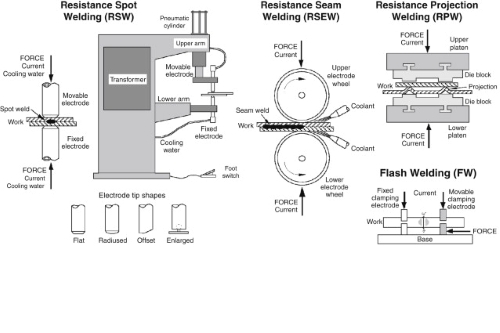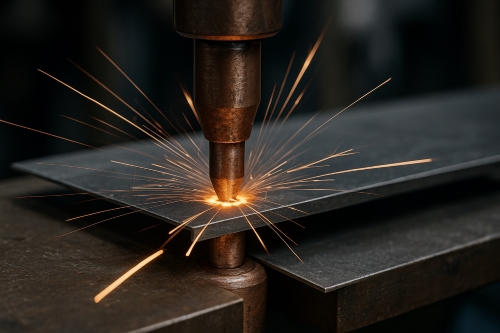List of Earth's Powerful Magnets
1.N52 Neodymium Iron Boron – BHmax 52 MGOe, Field Approximately 1.48 Tesla
Neodymium iron boron magnets rank among the significant types of permanent magnets in modern technology. The N52 grade magnet has a maximum energy product of 52 megagauss-oersted and produces a magnetic field of nearly 1.48 tesla. These magnets find extensive application in motors, generators, and other advanced devices. They perform well in situations where size and efficiency are critical due to their high strength. In daily devices, they are beneficial where space is limited but high performance is necessary.
2.Samarium Cobalt – BHmax 14 to 32 MGOe, Field Around 1.2 Tesla
Samarium cobalt magnets demonstrate decent resistance to elevated temperatures. With a maximum energy product ranging from 14 to 32 megagauss-oersted and a field of approximately 1.2 tesla, they are used in applications where other magnets would fail under heat. Their stability ensures they are the preferred choice for aerospace and military applications. They are also employed in devices requiring a stable magnetic field despite challenging environments. Their performance remains consistent over an extended lifespan.
3.Alnico Magnets – BHmax 4 to 12 MGOe, Field Approximately 0.8 Tesla
Alnico magnets, composed of aluminium, nickel, and cobalt, have been in use for many years. They feature a maximum energy product of four to 12 megagauss-oersted, with a field of roughly 0.8 tesla. Although weaker than neodymium magnets, alnico magnets are stable at various temperatures and durable. Alnico magnets are applied in sensors, guitar pickups, and other industrial devices. They serve as reliable components in many older systems due to their dependability and predictable performance.
4.Ferrite and Ceramic Magnets – BHmax 1.2 to 1.6 MGOe, Field Around 0.4 Tesla
Ferrite, or ceramic, magnets are cost-effective. With a typical maximum energy product of 1.2 to 1.6 megagauss-oersted and a field of about 0.4 tesla, these magnets are used in numerous household applications. They are commonly found in speakers, refrigerator magnets, and other electronic devices. They reduce electronic costs through their ease of production and reliable operation. They perform adequately where maximum magnetic power is not a requirement.
5.Other Powerful Magnets
Terfenol-D is a magnetostrictive alloy that alters shape in a magnetic field, providing about 1.2 MGOe and approximately 1 tesla—ideal for actuators, sensors, and precision devices where response time is crucial. For research purposes, Bitter and resistive electromagnets serve as the foremost steady-field champions at around 45.5 tesla and 42 tesla, respectively, but they demand substantial power and cooling. Superconducting magnets achieve similar strengths with virtually zero energy loss when cooled, making them essential in MRI machines and laboratories. To generate extreme bursts, pulsed electromagnets can attain up to 1,200 tesla, enabling phenomena unattainable by static magnets. Furthermore, in regions far beyond Earth, magnetars produce fields of about 10^15 tesla— recognised as the strongest known in the universe.
Conclusion
The field of magnetism presents an intriguing range from everyday applications to cosmic extremes. Permanent magnets such as neodymium iron boron and samarium cobalt offer reliable energy for domestic appliances and high-technology industries. Additionally, electromagnets—including Bitter, resistive, and superconducting—allow scientists to explore the limits of magnetic field strength.
Frequently Asked Questions
F: Why are neodymium magnets so strong?
Q: They possess a high energy product and effective magnetic alignment, enabling their performance at small sizes.
F: Can magnets lose their strength over time?
Q: Yes, they can lose some of their magnetism when exposed to elevated temperatures or physical damage.
F: Are pulsed electromagnets safe to use in the laboratory?
Q: Yes, with appropriate controls and timing, they are safe and important tools in research.

 Bars
Bars
 Beads & Spheres
Beads & Spheres
 Bolts & Nuts
Bolts & Nuts
 Crucibles
Crucibles
 Discs
Discs
 Fibers & Fabrics
Fibers & Fabrics
 Films
Films
 Flake
Flake
 Foams
Foams
 Foil
Foil
 Granules
Granules
 Honeycombs
Honeycombs
 Ink
Ink
 Laminate
Laminate
 Lumps
Lumps
 Meshes
Meshes
 Metallised Film
Metallised Film
 Plate
Plate
 Powders
Powders
 Rod
Rod
 Sheets
Sheets
 Single Crystals
Single Crystals
 Sputtering Target
Sputtering Target
 Tubes
Tubes
 Washer
Washer
 Wires
Wires
 Converters & Calculators
Converters & Calculators
 Write for Us
Write for Us
 Chin Trento
Chin Trento



